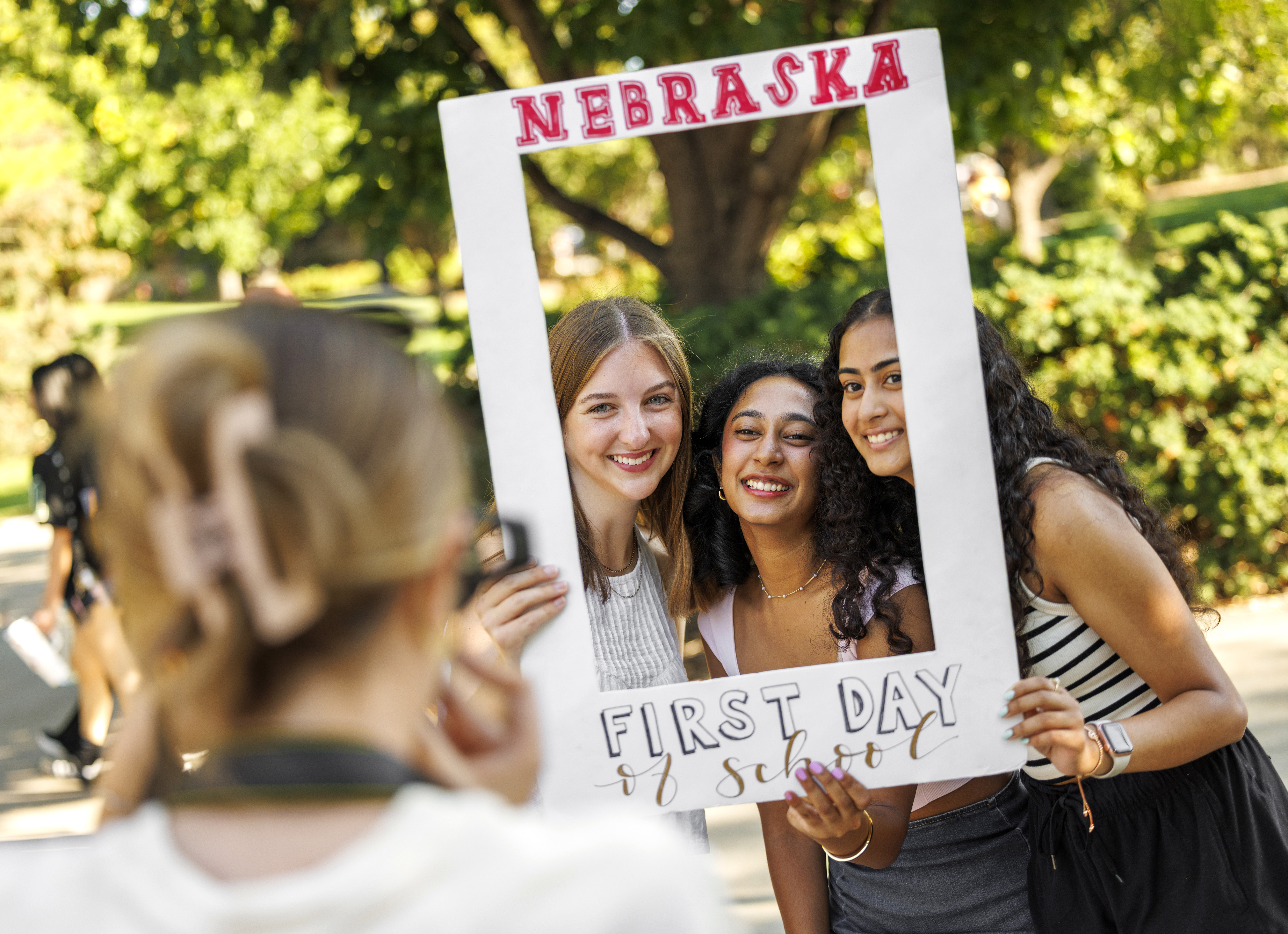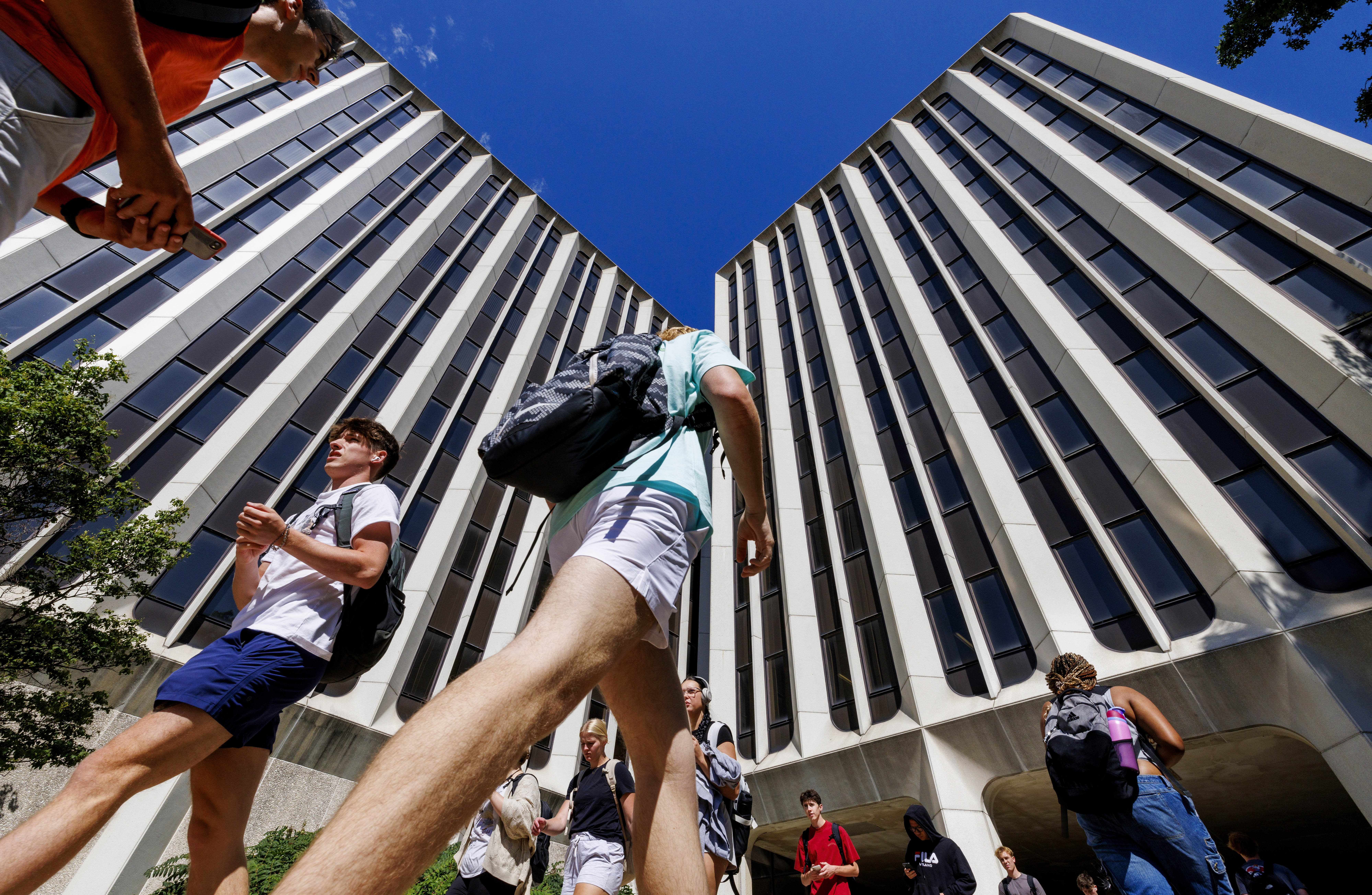
Fueled by strong recruitment efforts and a record-setting retention rate, the University of Nebraska–Lincoln’s student body grew to 23,992 students, an increase of 1.7%, according to the fall census of students taken Sept. 2.
“This enrollment increase is a credit to the faculty and staff who have worked so hard to retain our current students and enroll new Huskers,” said Chancellor Rodney D. Bennett. “This is success that we can build upon as we press forward into a bright future for the University of Nebraska–Lincoln.”
This year’s class of first-time, first-year students from Nebraska hit 3,579, the largest in-state entering class since 2017. Among them is Emma Robbins, a first-generation college student from Morrill, Nebraska. Her journey to UNL reflects a broader trend of students making college choices based on the one-to-one connections forged during campus visits.
“When I visited campus the second time, Jeff Beavers, who leads recruitment for the College of Engineering, remembered my name,” Robbins said. “Coming from a small town out in the Panhandle, that meant a lot. It helped me realize that I could find my community here, that this could be home.”
Robbins also connected with the university by being a longtime participant in 4-H programming and taking part in orientation programs led by the Center for Academic Success and Transition.
The student census, taken annually on the sixth day of class, recorded 19,305 undergraduate students registered for classes, an increase of 1.8% from fall 2023. The headcount also tracked growth in graduate student enrollment, up 1.3% to 4,064 students.

Robbins is part of a record-setting enrollment of 3,722 undergraduates in the College of Engineering, a 9.1% increase from fall 2023. She said the strength of the civil engineering degree programs, along with investments made in the college, were important in her decision to become a Cornhusker.
“Everyone knows that engineering is big at Nebraska,” Robbins said. “The facilities are incredible — especially the new Kiewit building. It is an amazing space and offers so many opportunities to students.”
Other colleges seeing growth in undergraduate enrollment this fall include:
- Agricultural Sciences and Natural Resources, up 2% to 2,156;
- Business, up 2.3% to 3,825;
- Education and Human Sciences, up 3.4% to 2,373;
- Fine and Performing Arts, up 3.1% to 838; and
- Journalism and Mass Communications, up 6.9% to 1,047.
Student retention efforts are also reinforcing enrollment at UNL. Preliminary data indicates that a record-setting 86% of first-year students in 2023 have returned for their sophomore year.
“We are thrilled with achieving the highest retention rate in UNL history,” said Amy Goodburn, senior associate vice chancellor and dean of undergraduate education. “It shows more UNL students are being successful and is a testament to the faculty and staff who have worked so hard to create belonging across campus — in classrooms, research labs, resource centers and residence and dining halls.”
Additional metrics of note from the 2024 student census at the University of Nebraska–Lincoln include:
- The student body continues to increase in ethnic diversity. More than 22% of first-time freshmen, nearly 22% of all undergraduates, 14% of graduates and 17% of professional students are from ethnic minorities;
- For the first time in six years, international student enrollment increased, up 1% to 1,654 students;
- Largest undergraduate enrollments ever for the College of Engineering (3,722) and College of Fine and Performing Arts (838), both of which have had significant investments in facilities in recent years;
- Largest first-time freshmen enrollments for the College of Business (909), College of Fine and Performing Arts (180) and Journalism and Mass Communications (215);
- Average credit hours enrolled per student increased 1.6%; and
- UNL enrollment includes students from all 50 states.
Share
News Release Contact(s)
Tags
High Resolution Photos

HIGH RESOLUTION PHOTOS








